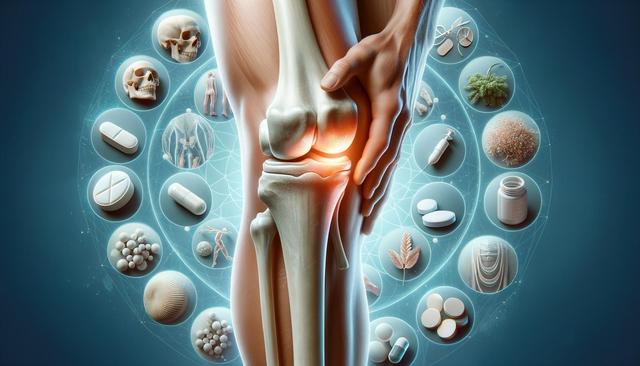Understanding Osteoarthritis and Its Impact
Osteoarthritis is a degenerative joint condition that affects millions of people worldwide. It occurs when the cartilage that cushions the ends of bones gradually breaks down, leading to pain, stiffness, and reduced mobility. While it can affect any joint, it most commonly impacts the knees, hips, hands, and spine. The progression of osteoarthritis can make daily tasks such as walking, climbing stairs, or gripping objects increasingly difficult. Understanding the underlying causes and symptoms is the first step in finding effective ways to manage joint pain from arthritis and maintain quality of life.
Several factors contribute to the development of osteoarthritis, including age, joint injuries, obesity, genetics, and repetitive stress on the joints. Recognizing early signs such as persistent joint stiffness, swelling, and a grinding sensation during movement can help in seeking timely medical advice. Early intervention allows individuals to explore both medical and lifestyle-based approaches to slow the progression of the disease and reduce discomfort.
Medical and Non-Surgical Options for Osteoarthritis
When it comes to the best treatments for osteoarthritis pain, various non-surgical strategies can offer significant relief. Many individuals find dependable results through a combination of medications and physical therapy. Non-steroidal anti-inflammatory drugs (NSAIDs) are commonly prescribed to reduce inflammation and pain, while corticosteroid injections may be used in more severe cases to provide stronger, temporary relief.
Beyond medication, non surgical options for osteoarthritis include:
- Physical therapy to strengthen muscles and support joint function
- Weight management programs to relieve stress on weight-bearing joints
- Assistive devices such as braces, canes, and shoe inserts
- Low-impact exercises like swimming and cycling
These approaches aim to improve joint function and reduce reliance on medications, making them a sustainable choice for many people living with osteoarthritis.
Exploring Natural Remedies for Osteoarthritis Relief
For those seeking a more holistic approach, natural remedies for osteoarthritis relief can be a valuable addition to a treatment plan. While these options may not replace medical treatments, they can complement them and provide added comfort. Some commonly used natural remedies include:
- Hot and cold compresses to manage pain and inflammation
- Topical creams containing capsaicin or menthol for localized relief
- Herbal supplements such as turmeric, ginger, and boswellia
- Dietary changes that focus on anti-inflammatory foods like leafy greens, fatty fish, and berries
It’s important to consult with a healthcare professional before starting any supplement regimen, especially if you are on other medications. Integrating natural therapies into your routine may help enhance overall well-being and reduce osteoarthritis-related symptoms.
Improving Mobility and Quality of Life
One of the primary goals of osteoarthritis care is to improve mobility with arthritis care strategies that are both practical and sustainable. Physical activity, though sometimes challenging, is essential for maintaining joint flexibility and muscle strength. Tailored exercise routines that focus on stretching, range-of-motion movements, and low-impact aerobic activities can make a noticeable difference in mobility and pain levels.
In addition to physical therapy and exercise, lifestyle adjustments play a crucial role. These may include:
- Maintaining a healthy weight to reduce pressure on joints
- Using ergonomic tools and furniture to minimize strain
- Following a structured daily routine to balance activity and rest
- Staying socially and mentally active to support emotional well-being
By combining these elements, individuals can build a comprehensive care plan that enhances their ability to move comfortably and take part in daily life more fully.
Working with Healthcare Providers for Personalized Care
Osteoarthritis is a condition that varies widely in its severity and progression from person to person. This makes working closely with healthcare professionals essential for creating a personalized treatment plan. Regular check-ins with a primary care provider, rheumatologist, or orthopedic specialist can help monitor the condition and make necessary adjustments to treatment strategies.
Patients are encouraged to be proactive in their care by tracking symptoms, asking questions, and exploring new options as they become available. Education and communication are vital in identifying the best treatments for osteoarthritis pain specific to an individual’s needs. In some cases, advanced therapies such as hyaluronic acid injections or regenerative treatments may be discussed as part of a longer-term plan.
Ultimately, combining medical guidance with self-care practices and lifestyle adjustments creates a well-rounded approach. This empowers individuals to better understand how to manage joint pain from arthritis and take an active role in maintaining their health and mobility.
Conclusion: Taking Steps Toward Relief and Comfort
Managing osteoarthritis doesn’t have to mean giving up the activities you enjoy. With a thoughtful mix of medical treatments, non-invasive therapies, and natural approaches, it’s possible to minimize discomfort and regain control over your daily life. Whether you’re exploring natural remedies for osteoarthritis relief or seeking non surgical options for osteoarthritis, the key lies in finding what works best for your individual needs. By focusing on long-term strategies to improve mobility with arthritis care, you can take meaningful steps toward a more comfortable, active lifestyle. Consult with your healthcare provider to create a treatment plan that supports your goals and keeps you moving forward.




Leave a Reply